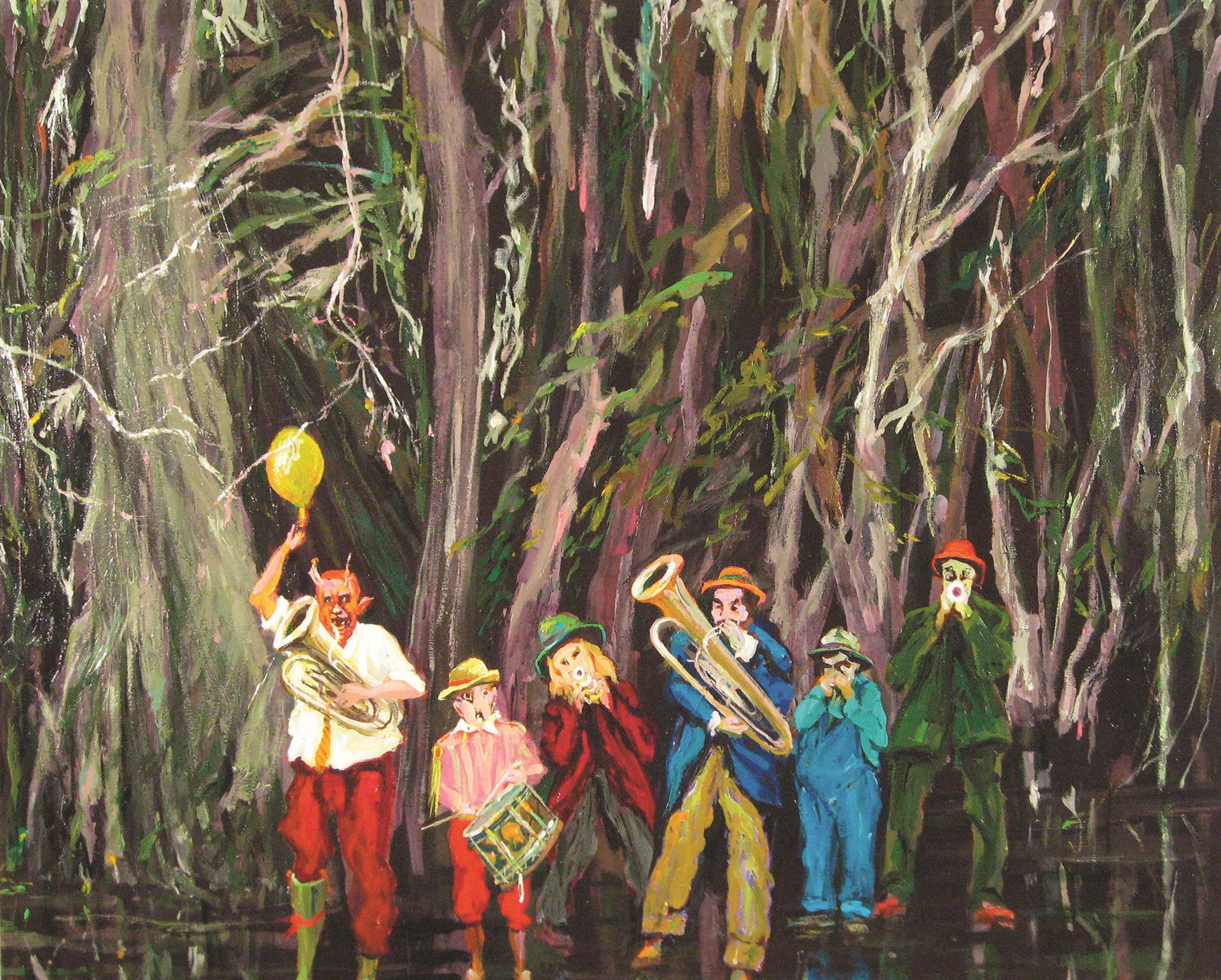Arnold Mesches, a prominent artist and activist, wielded his art as a powerful tool against social injustice. His provocative work, often exploring themes of political repression and the human condition, drew the unwanted attention of the FBI, resulting in a surveillance file that would later become integral to his art itself. This article explores the life, art, and enduring legacy of Arnold Mesches, a man who transformed government scrutiny into a canvas for creative resistance.
Mesches: A Rebel with a Brush
Arnold Mesches was more than just an artist; he was a storyteller, a rebel, and a chronicler of his time. He used vibrant colors and bold lines not merely for aesthetic pleasure, but to ignite conversations about social justice. His art demanded engagement, urging viewers to confront uncomfortable truths and grapple with complex issues. Living through turbulent decades, Mesches reflected the anxieties, injustices, and struggles for change of his era in his artwork. He received significant recognition for his powerful work, including a National Endowment for the Arts grant and the Pollock-Krasner Award.
Mesches’ artistic journey involved constant experimentation with different styles and mediums. From abstract shapes to intricate details, his techniques evolved while his core message remained: a profound exploration of the human condition amidst social and political upheaval.
Beyond his studio, Mesches was a dedicated activist, his art inextricably linked to his political beliefs and experiences fighting for social justice. His “FBI Files” series stands as a testament to this dedication. Subjected to government surveillance for 25 years, Mesches transformed the very documents meant to silence him into art. He didn’t merely depict surveillance; he used the products of that surveillance as his raw materials, creating a complex tapestry of visual language and symbolism. This act of defiance earned him critical acclaim, solidifying his place as a significant American artist whose work continues to inspire and provoke dialogue.
Who Was Arnold Mesches: The Art of Defiance?
Mesches’s rebellion took root during the McCarthy era, a time of intense political paranoia. He channeled his outrage against oppressive forces into his art, creating provocative pieces that challenged the status quo. His most famous work, “The F.B.I. Files,” stemmed directly from his experience of being watched by the government. Incorporating the documents meant to intimidate him, he transformed them into symbols of resistance, saying, “You’re watching me? Fine. I’ll make art out of it.”
His art extended beyond his personal struggles with the FBI, encompassing a range of social and historical issues. He gave voice to the marginalized, exploring complexities of history, and challenging official narratives. His use of collage—fragments brought together to create a new whole—became a metaphor for the fragmented nature of truth and experience. Mesches’s collages invited viewers to question, consider different perspectives, and form their own interpretations.
Some experts believe his collages reflect the fragmented nature of memory. Others suggest they represent the multifaceted nature of identity. There is ongoing research into the influences on Mesches’s art, and it is probable that our understanding of his work will continue to evolve. His art serves as a powerful reminder of the ability of creative expression to challenge authority, provoke social change, and give voice to the voiceless, a testament to the enduring power of art to speak truth to power.
Key Points about Arnold Mesches:
- Artist, storyteller, rebel, and chronicler of his times
- Used art for social commentary, confronting uncomfortable truths and provoking thought
- Reflected anxieties, injustices, and fights for change prevalent in his era
- Experimented with various styles and mediums, pushing creative boundaries
- Explored the human condition amidst social and political upheaval
- Activist who saw art as a tool for change and a voice for the voiceless
- Created the FBI Files series, transforming surveillance documents into art of defiance
- His work used complex visual language and symbolism to convey messages of resistance
- Recognized for his provocative and thought-provoking pieces, earning him critical acclaim
- Legacy continues to inspire and challenge, demonstrating the power of art to enact social change
How Did the FBI Influence Mesches’ Art?
The FBI’s investigation of Mesches, suspected of communist sympathies during the McCarthy era, profoundly impacted his artistic trajectory. The constant surveillance deeply affected him, but instead of retreating, he confronted it through his art. He transformed the pages of his FBI file into collages, interweaving them with personal mementos and news clippings to create a layered depiction of his life in contrast to the government’s impersonal view.
The “FBI Files” series explores themes of censorship, identity, and the overreach of the McCarthy era, conveying a powerful message of defiance. The mysterious disappearance of over 200 of his politically charged paintings in 1956 further complicates the narrative, raising questions about the extent of government suppression of dissenting voices. Some theories suggest FBI involvement, highlighting the potential lengths to which authorities might go to silence dissent.
Mesches’ work resonates today in a world of increasing surveillance, reminding us of the importance of privacy and freedom of expression. It encourages us to question authority and speak out against injustice. His legacy may continue to inspire artists to engage with political and social issues, pushing boundaries and challenging the status quo.
| Theme | How it’s shown in Mesches’ art |
|---|---|
| Surveillance | Use of FBI files, fragmented imagery |
| Censorship | Challenging official narratives, reclaiming his story |
| Identity | Juxtaposition of personal items with official documents |
| Political Commentary | Critique of McCarthyism, challenging authority |
It’s important to remember that our understanding of this period is still evolving. While some believe the FBI’s influence was profound, other interpretations exist. Mesches’ art provides evidence of the anxieties and struggles of a time when individual freedoms were threatened.
Exploring Mesches’ Key Works and Themes
Mesches’s art confronts difficult topics, exploring social issues and political unrest, often inspired by his experiences with the FBI and the anxieties of modern life. His post-World War II pieces capture the pervasive unease of the time, often depicting skeletal figures in bleak landscapes. Over time, his style shifted toward a more chaotic, anarchic aesthetic, blending historical events and cultural symbols. His collages, mixing FBI files with personal items, expose the often oppressive nature of modern existence.
Key Themes:
- Politics and Social Commentary: Mesches directly addressed political issues, questioning authority and challenging injustice.
- Giving a Voice to the Marginalized: He focused on those overlooked by society, critiquing systems that perpetuate marginalization.
- Exploring What it Means to Be Human: Mesches delved into universal themes of anxiety, isolation, and the search for meaning.
Notable Series:
| Series Title | Description |
|---|---|
| War Images | Explores the horrors of war and their lasting psychological impact. |
| Anomie | Reflects the pervasive sense of aimlessness and alienation in modern society. |
| Coming Attractions | Critiques the use of entertainment to manipulate and sell ideas. |
Mesches’s Enduring Impact:
His art continues to resonate, reminding us of art’s power to challenge authority, provoke thought, and give voice to the unheard. His work is featured in major museum collections worldwide, inspiring and provoking dialogue.
Thinking Points:
- Mesches’ style blended Social Realism, Expressionism, and collage.
- His art was deeply personal and political.
- His work explored the complexities of the human condition.
Artistic interpretation is always evolving. New research and perspectives can shed new light on an artist’s work, and while we can analyze Mesches’s art based on current knowledge, our understanding might evolve in the future. This ongoing conversation is part of what makes exploring art so fascinating.
Important Details about Arnold Mesches:
- Birth and Early Life: Born August 11, 1923, in the Bronx, NY; raised in Buffalo, NY, in an Orthodox Jewish family; his father was a Lithuanian immigrant who struggled during the Great Depression.
- Education and Artistic Development: Moved to Los Angeles in 1943 on a scholarship to the Art Center School.
- FBI Surveillance: FBI file opened in 1945, labeling him a subversive communist; inspired his “The F.B.I. Files” series.
- Artistic Style and Themes: Provocative, layered collages; explored contemporary social and historical issues; influenced by the Depression and world history; addressed McCarthyism and government overreach.
- Teaching Career: Taught at Parsons College, Rutgers University, New York University, and the University of Florida, Gainesville, after his art career declined.
- Personal Life: Married with two children; affairs with numerous women; married his former student, Jill Ciment, in 1972 (30 years his junior) after an affair began in 1970 when she was 17.
- Death: Died November 5, 2016, at age 93.
- Legacy: Over 125 solo exhibitions; works in collections of major museums, including the Metropolitan Museum of Art, Los Angeles County Museum of Art, Brooklyn Museum, and Museum of Modern Art in Sydney, Australia.
- Key Art Series: “The F.B.I. Files,” “War Images,” “Anomie,” “Coming Attractions”
By exploring these facets of his life and work, we can gain a deeper appreciation for Arnold Mesches’s enduring legacy as a significant American artist.
- Unlock Water’s Symbolism: A Cross-Cultural Exploration - April 20, 2025
- Identify Black and White Snakes: Venomous or Harmless? - April 20, 2025
- Unlocking Potential: Origins High School’s NYC Story - April 20, 2025
















2 thoughts on “Arnold Mesches: Art, Activism, and the FBI Files”
Comments are closed.